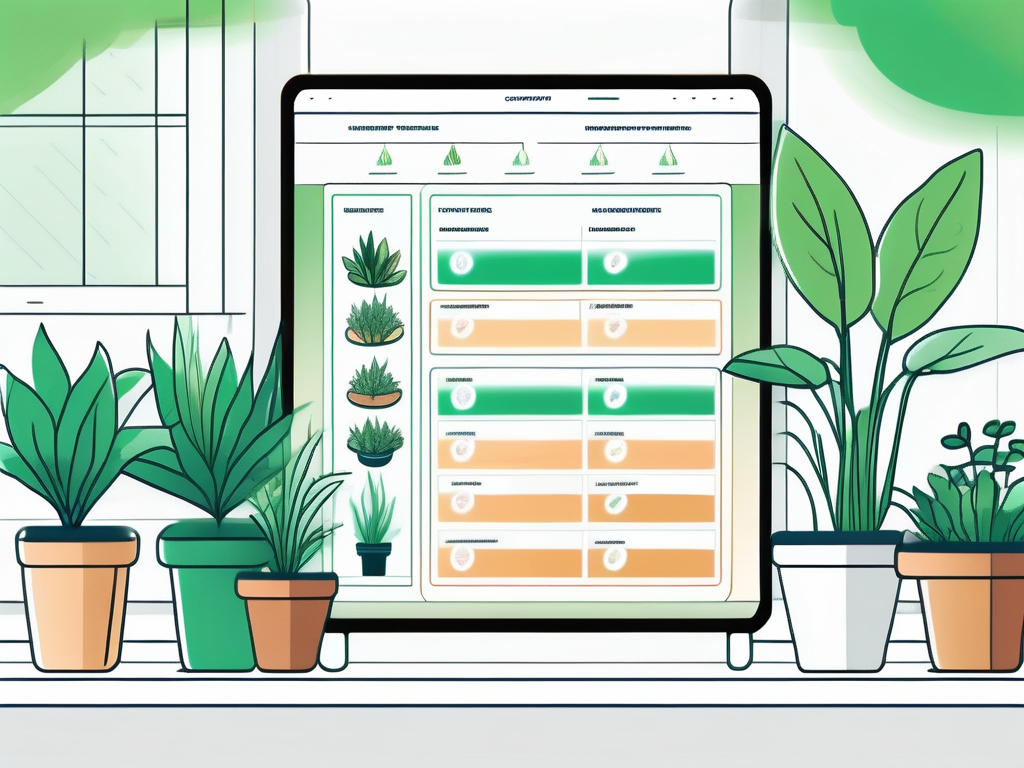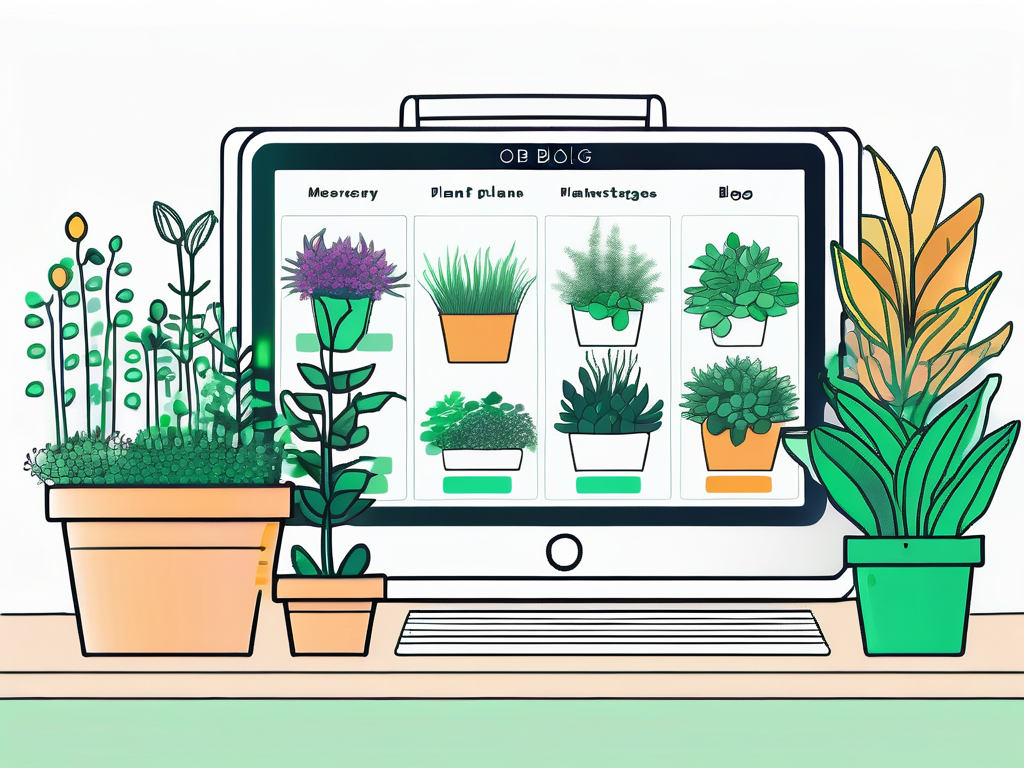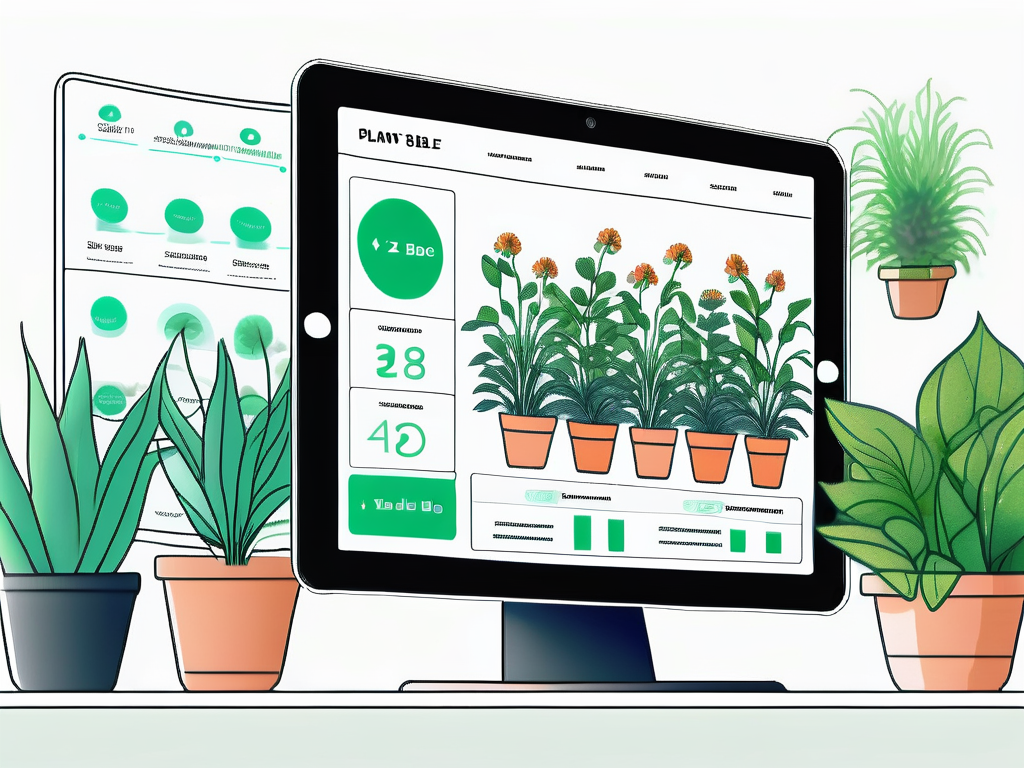
Gardening can be a rewarding and enjoyable hobby, but it’s not without its challenges. One common struggle for many gardeners is keeping track of their plants and ensuring they are properly cared for. This is where nursery plant label software comes in handy. These technological tools provide an efficient way to label and organize plants in your garden, making gardening easier and more enjoyable. In this article, we will explore the importance of plant labeling, key features to look for in nursery plant label software, review some top-rated options, provide tips for effective plant labeling, and discuss future trends in plant labeling technology.
Understanding the Importance of Plant Labeling
Gardening is a meticulous art that requires attention to detail. Plant labeling plays a crucial role in effective gardening. By labeling your plants, you can easily identify and differentiate between various species, ensuring that each plant receives the proper care it needs.
Moreover, plant labeling can also serve as an educational tool. When visitors or fellow gardeners explore your garden, labeled plants can spark conversations and enhance knowledge sharing. You can showcase unique plant species and share interesting facts about them, fostering a sense of community and learning within the gardening world.
The Role of Plant Labeling in Effective Gardening
Ineffective gardening can lead to confusion and mistakes, such as overwatering or under-watering plants or failing to provide them with the right amount of sunlight. Plant labeling eliminates these risks by providing a clear understanding of each plant’s requirements.
Furthermore, plant labeling can be a creative endeavor. You can personalize your plant labels with artistic designs or use different colors to categorize plants based on their needs. This not only adds a decorative element to your garden but also makes the labeling process more engaging and enjoyable.
How Plant Labeling Enhances Nursery Organization
Plant labeling also enhances nursery organization. By labeling plants and categorizing them based on their characteristics, you can easily locate specific plants in your garden. Whether you need to find flowering plants or shade-loving ones, proper labeling ensures efficient organization.
Additionally, plant labeling can aid in tracking the growth and development of your plants. By including the date of planting or other relevant information on the labels, you can monitor the progress of each plant over time. This data can help you make informed decisions about pruning, fertilizing, or transplanting, leading to healthier and more vibrant plants in your garden.
Key Features to Look for in Nursery Plant Label Software
When it comes to choosing the best nursery plant label software, there are several key features you should consider. These features will ensure that you have a user-friendly experience and can customize your plant labels according to your preferences.

Investing in nursery plant label software can revolutionize the way you organize and label your plants. Not only does it save time, but it also adds a professional touch to your garden. With the right software, you can create stunning labels that not only help you identify your plants but also enhance the overall aesthetic of your garden.
User-Friendly Interface and Ease of Use
A user-friendly interface is essential when selecting nursery plant label software. Look for software that offers an intuitive and easy-to-navigate interface, allowing you to create, edit, and manage your plant labels effortlessly.
Imagine a software that not only simplifies the label-making process but also provides tutorials and guides to help you make the most out of its features. A user-friendly interface coupled with comprehensive support can make your gardening experience more enjoyable and productive.
Customization Options for Your Plant Labels
Each gardener has their own unique style and preferences. The best nursery plant label software should offer various customization options, allowing you to customize your plant labels with different fonts, colors, sizes, and designs. This level of customization adds a personal touch to your garden and makes plant identification more enjoyable.
Furthermore, some advanced software even allows you to add QR codes to your plant labels, providing visitors with instant access to detailed information about the plant via their smartphones. This innovative feature not only impresses guests but also showcases your dedication to utilizing technology in gardening.
Integration with Other Gardening Tools
In this digital age, software integration is crucial. Look for nursery plant label software that seamlessly integrates with other gardening tools you use, such as inventory management systems or plant care reminders. This integration ensures that all aspects of your gardening routine are streamlined and easily accessible.
Imagine having a software that not only helps you create beautiful plant labels but also syncs with your gardening calendar, reminding you of important tasks such as watering, fertilizing, or pruning. This level of integration can turn your gardening hobby into a well-organized and efficient practice, ensuring your plants thrive throughout the seasons.
Top-Rated Nursery Plant Label Software
Now that we know the key features to look for, let’s explore some of the top-rated nursery plant label software options available:

Review of Software A
Software A is a highly acclaimed nursery plant label software that offers a user-friendly interface and a wide range of customization options. It integrates seamlessly with other gardening tools, making it a top choice for gardening enthusiasts.
One of the standout features of Software A is its extensive plant database, which includes detailed information on a wide variety of plant species. This database not only helps users in labeling their plants accurately but also serves as a valuable resource for learning more about different plants and their care requirements. Additionally, Software A provides regular updates to its database, ensuring that users have access to the latest plant information.
Review of Software B
Software B stands out for its simplicity and ease of use. It offers basic customization options and is perfect for gardeners who prefer a more straightforward approach to plant labeling.
Despite its simplicity, Software B does not compromise on functionality. It allows users to easily create professional-looking plant labels with essential information such as plant names, care instructions, and watering schedules. The intuitive design of Software B makes it a popular choice among beginners and experienced gardeners alike.
Review of Software C
Software C is known for its advanced features and integration capabilities. With Software C, you can not only label your plants but also manage your entire garden inventory, ensuring that your gardening activities are well-organized.
In addition to plant labeling, Software C offers robust tools for tracking plant growth, monitoring pest infestations, and creating personalized gardening schedules. Its seamless integration with weather forecasting services allows users to receive real-time updates on weather conditions, helping them make informed decisions about their gardening tasks. Software C is a comprehensive solution for gardeners looking to streamline their plant labeling and management processes.
Making the Most of Your Nursery Plant Label Software
Now that you have chosen the ideal nursery plant label software for your garden, it’s essential to make the most of its features. Here are some tips for effective plant labeling:

Tips for Effective Plant Labeling
1. Include essential information: Ensure that your plant labels include vital details such as the plant’s name, species, or cultivar. 2. Add care instructions: Include care instructions on the label, such as watering frequency, sunlight requirements, and any specific fertilization needs. 3. Use waterproof materials: To ensure longevity, make sure your plant labels are made of waterproof materials, protecting them from rain and other weather conditions. 4. Group plants logically: Categorize and group your plants based on their specific needs, such as water requirements or blooming seasons. 5. Regularly update information: As your garden evolves, update your plant labels to reflect any changes in the plant’s characteristics or care requirements.
Maintaining Your Digital Plant Catalog
In addition to physical plant labels, most nursery plant label software allows you to maintain a digital catalog of your garden. Take advantage of this feature to keep track of your plants’ growth, monitor their health, and store photos of your garden’s progress.
Future Trends in Nursery Plant Label Software
The world of nursery plant label software is always evolving. Here are some predicted advancements in plant labeling technology:
Predicted Advancements in Plant Labeling Technology
1. Enhanced label materials: Technological advancements will lead to the development of more durable and eco-friendly label materials that can withstand harsh weather conditions. 2. RFID technology: Radio-frequency identification (RFID) tags may become more prevalent in plant labeling, allowing for seamless communication between software and physical labels. 3. Artificial intelligence (AI) and machine learning: AI technology may be used to analyze plant data and provide personalized care recommendations based on a plant’s specific needs. 4. Voice-controlled labeling: Voice recognition technology may enable hands-free plant labeling, allowing gardeners to add information simply by speaking into their devices.
How AI and Machine Learning Could Impact Plant Labeling
AI and machine learning have the potential to revolutionize plant labeling. These technologies can identify plant species, analyze environmental data, and provide real-time insights into a plant’s health and growth. By harnessing the power of AI and machine learning, gardeners can receive valuable recommendations for optimal plant care.
In conclusion, nursery plant label software is an essential tool for any gardener looking to keep their garden organized and their plants thriving. By understanding the importance of plant labeling, considering key features in software selection, utilizing effective labeling techniques, and staying aware of future trends, you can optimize your gardening experience and create a beautiful, well-maintained garden.



